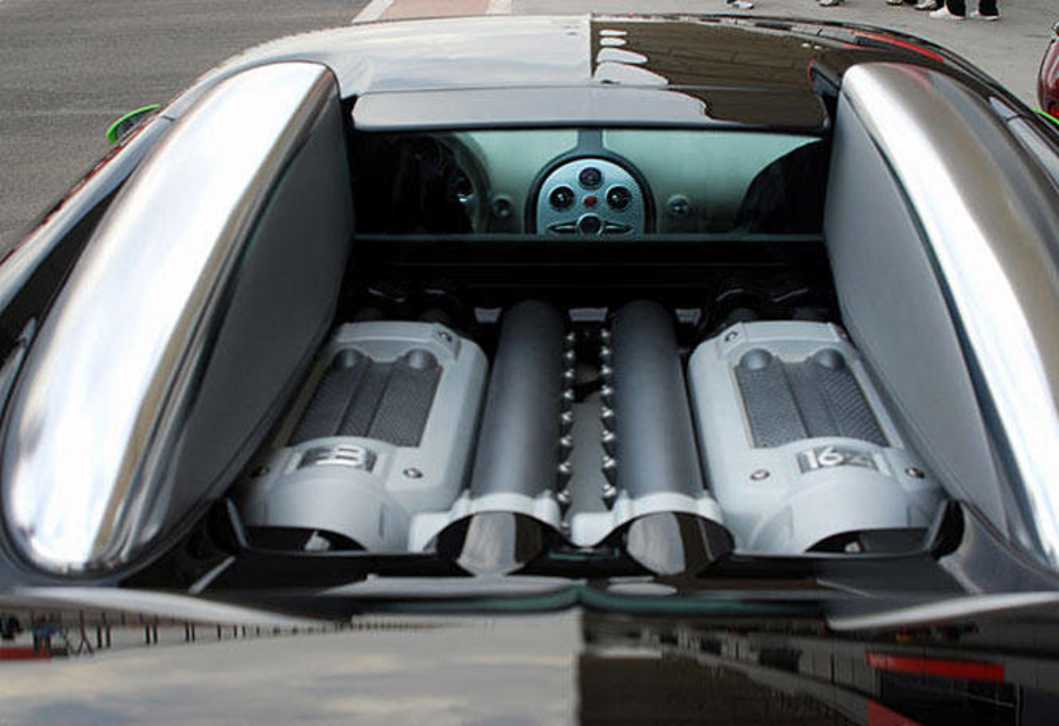Seeing the photos of the Bugatti Veyron Bleu Centenaire from Geneva Motor Show was a reminder of the Chiron concept that seeded this magnificent car. So we thought it was time for a quick trawl through the Veyron’s history and family album. Yes, just because we love them.
History
The bloodline for the Bugatti Veyron starts in 1999 with the Bugatti 18/3 Chiron concept, the chassis of which was used to build the EB 18/4 concept car.
In 2000, parent company Volkwagen announced the Veyron would be put into production, and would be the fastest and most powerful – and also the priciest – car in history.
In 2001, Bugatti announced that the Bugatti Veyron 16.4 would go into production in 2003, and a year later a silver and black pre-production Veyron was showcased at the 2004 Paris Motor Show.
Since going on sale, there have been several special editions.
The 2007 Frankfurt Motor Show featured the Pur Sang, which stripped the car’s body finishes back to carbon fibre and aluminium.
The 2008 Geneva Motor Show had a Veyron finished by French fashion and leathergoods house, Hermes. Called the Fbg par Hermes, it was trimmed in the house’s leather and included bespoke luggage, eight-spoke wheels and an H-pattern grille.
The Sang Noir — a tribute to the original 1930s Bugatti Atlantique 57S – also showed a heavy use of carbon fibre in its mainly all-black colour scheme, which included blacked-out headlights.
The 2008 Pebble Beach Concours d-Elegance previewed the Grand Sport slated for production in 2009, with two removable tops – one of them a temporary roof based on an umbrella and paying homage to photos of classic Bugatti racers with umbrellas in hand.
The 2009 Geneva Motor Show saw the unveiling of the Bleu Centenaire – designed to mark Bugatti’s centenary.
Drivetrain and performance
The Veyron features a W16 engine — 16 cylinders in two banks of eight cylinders, making a `W’, mated to a seven-speed dual-clutch DSG transmission.
The engine is conservatively claimed to develop 736kW and 1250Nm, with the car’s weight of 2034.8kg giving it a power-to-weight ratio of 2kg/0.7kW (4.5lb/1bhp in Imperial)
The car's wheelbase is 2710mm, and has an overall length of 4462mm, width is 1998mm and height is 1204mm.
It is acknowledged as the fastest production car made, getting to 100km/h in just 2.45 seconds (200km/h in 7.0 and 300km/h in 16.2) and while the official top speed is listed as 375km/h, it has been verified at over 407km/h. It was initially meant to be 420km/h but test cars proved to be too unstable so the aerodynamics were revised.
It has a drag coefficient of 0.36, but uses a whopping 40L/100km of fuel in city driving, and 24L/100km in a combined cycle. At full bore it reportedly burns 115L/100km and could drain its 100L tank in about 12 minutes.
None have been sold to Australia so far, but the asking price would be over $2 million with current exchange rates.







.jpg)
.jpg)
.jpg)

.jpg)



























































Comments